Jaques 4.4" Boxwood and Ebony set
Entered No. 8
The earliest Jaques club size sets, dating to 1849-50,
are made of boxwood and ebony, stored in a mahogany casket with the
label underneath the box. The sets are among most beautiful ever made,
with
exceptional care taken in the carving of the knights. Unfortunately,
these labels are invariably very worn as they were unprotected against
rubbing and wear, and the few rare examples are close to illegible.
Currently, the oldest legible label, and the second oldest label known
is that of set Entered No. 9, belonging to Jon Crumiller, and
illustrated on his excellent site. The label is printed but the
signature of Staunton is handwritten as is the "Entered" number.
http://www.crumiller.com/chess/chess_pages/staunton/Staunton_signature.htm
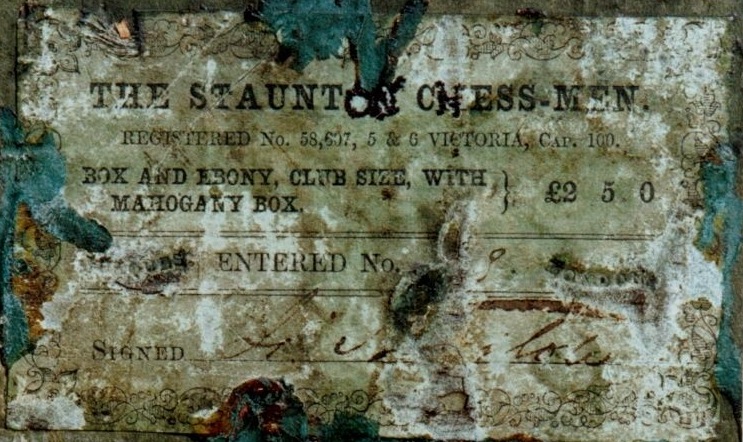
Label No. 9
Thanks to modern digital cameras, the label of another fine early set
has been identified as Entered No. 8.
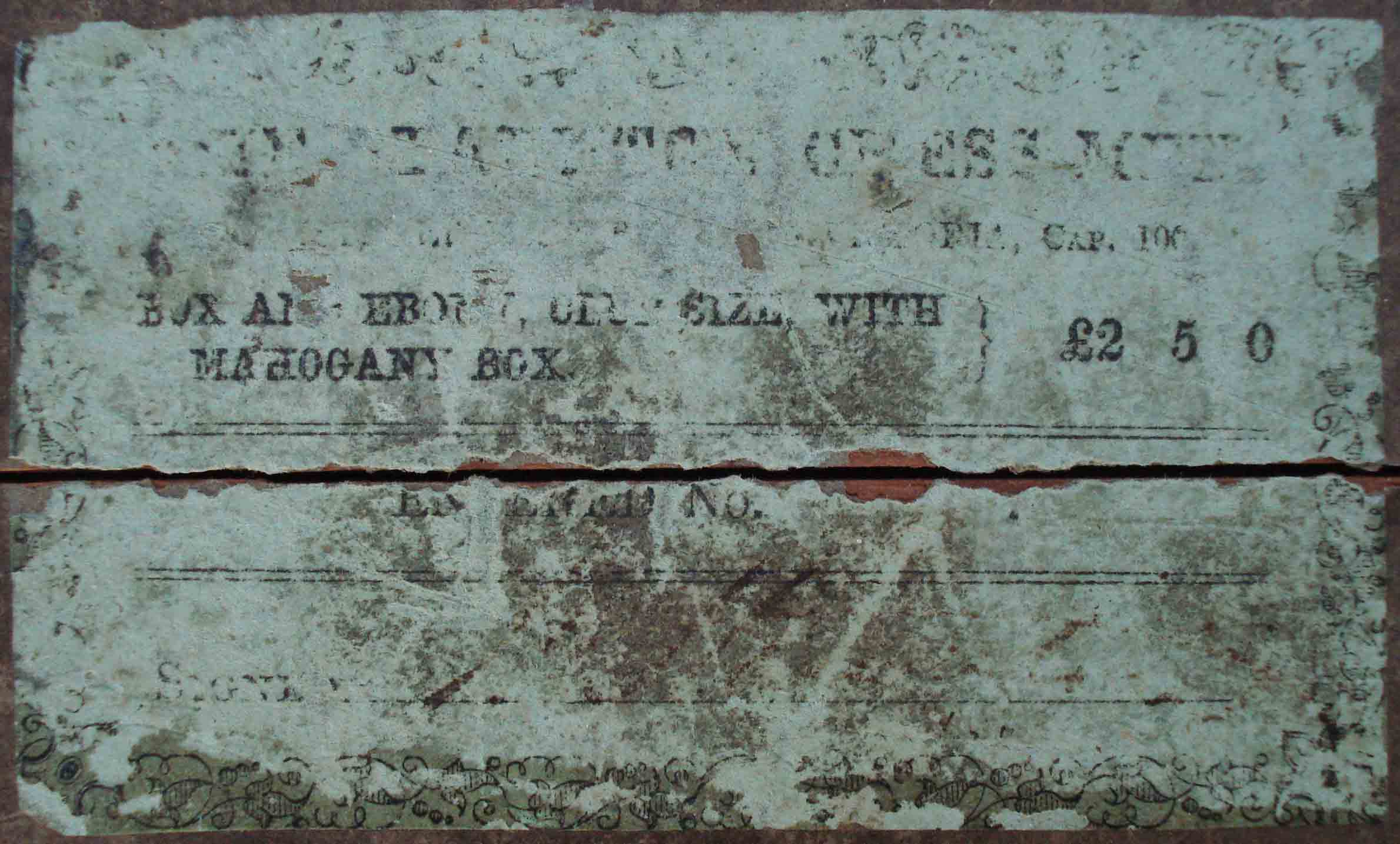
Label No.8
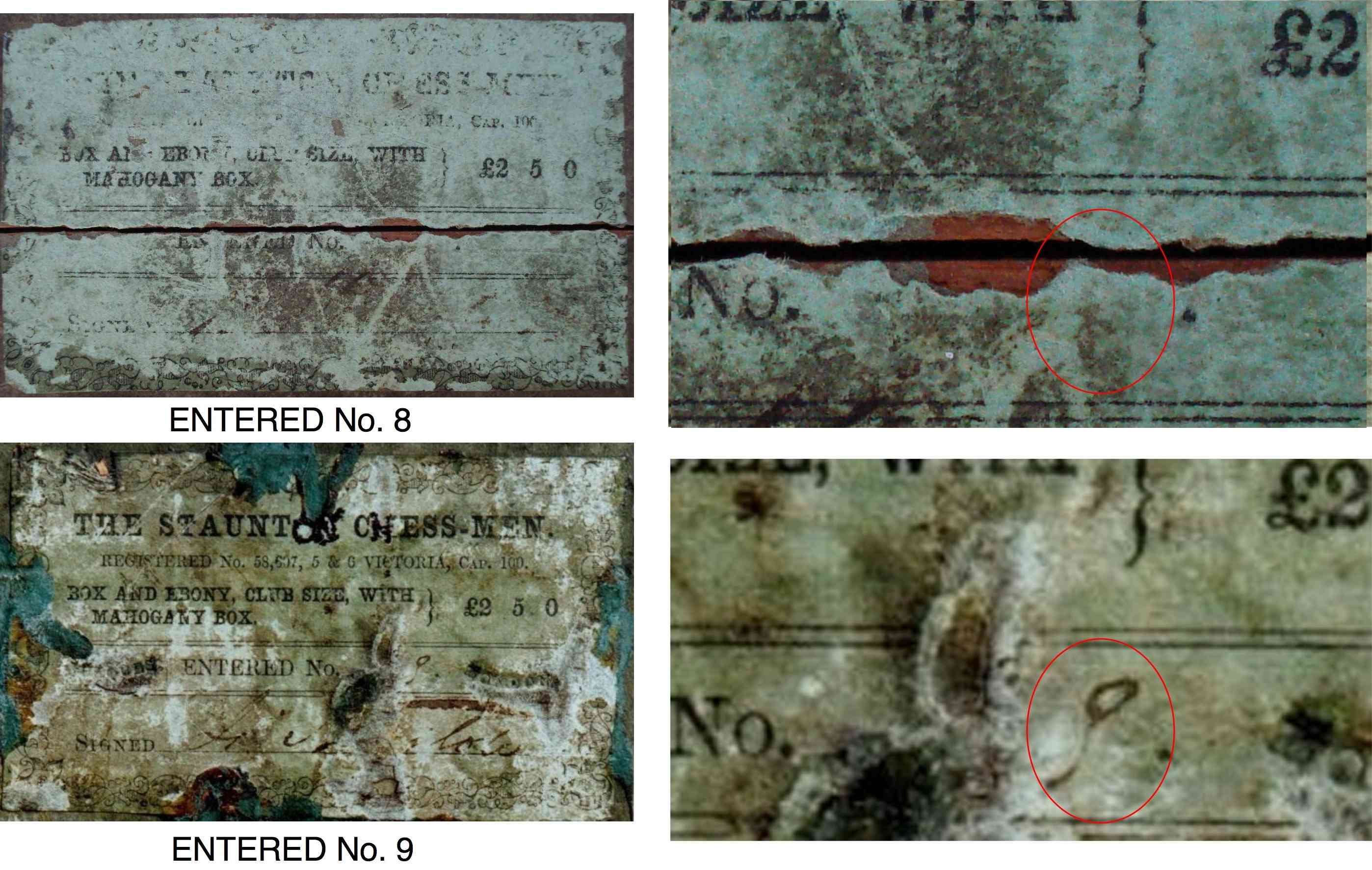
Labels compared, Entered No. expanded. The "8" and the "9" are in the
same positions.
The "8", though faint, is typical of Staunton's handwriting.
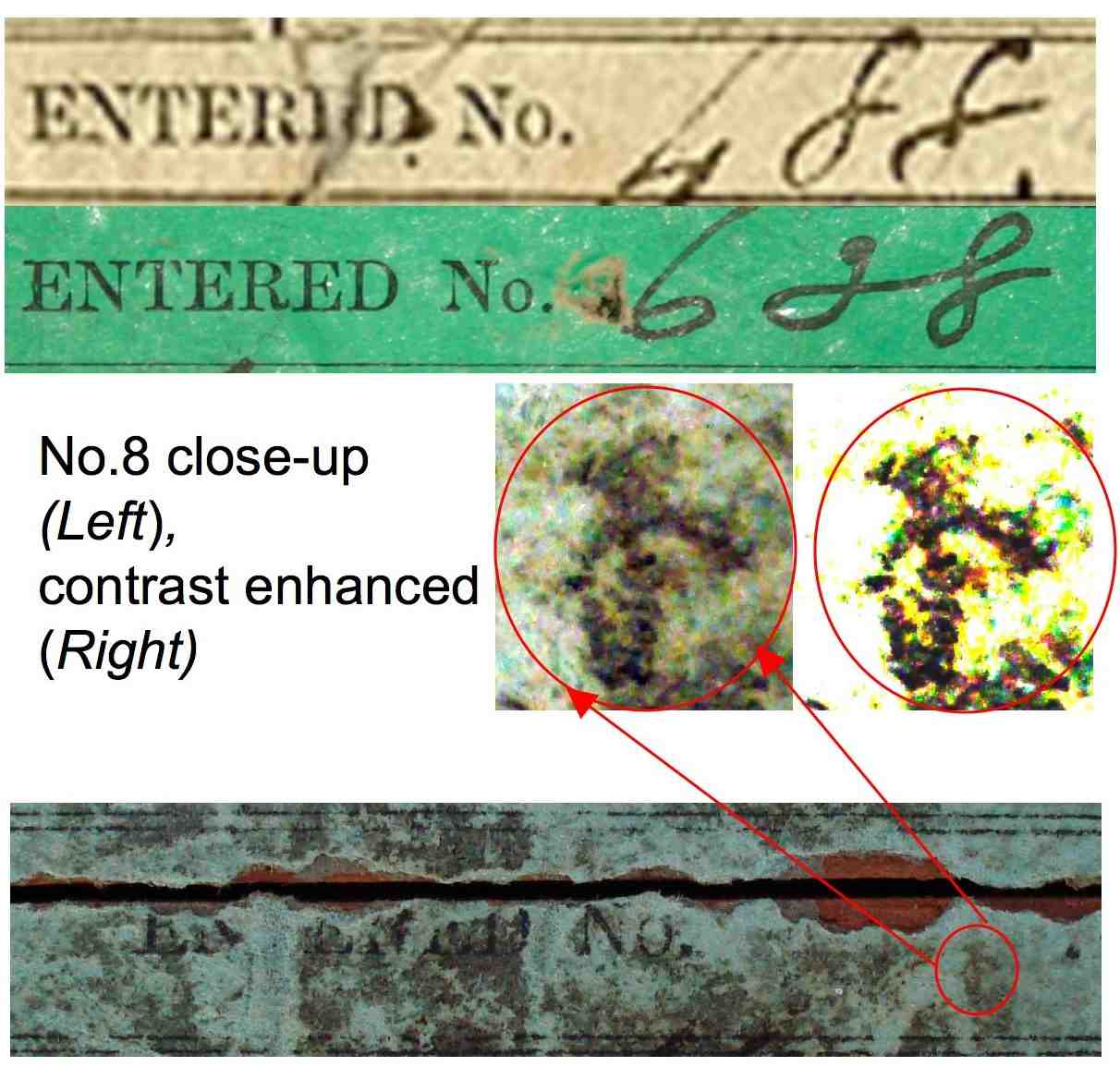
Knights
The knights are particularly fine, being very well matched in their
carving and undamaged. The black knights' heads are ebonised boxwood in
this period. This set has been little used and the ebonising has not
worn through. Frequently, the ears are broken. But not so here.
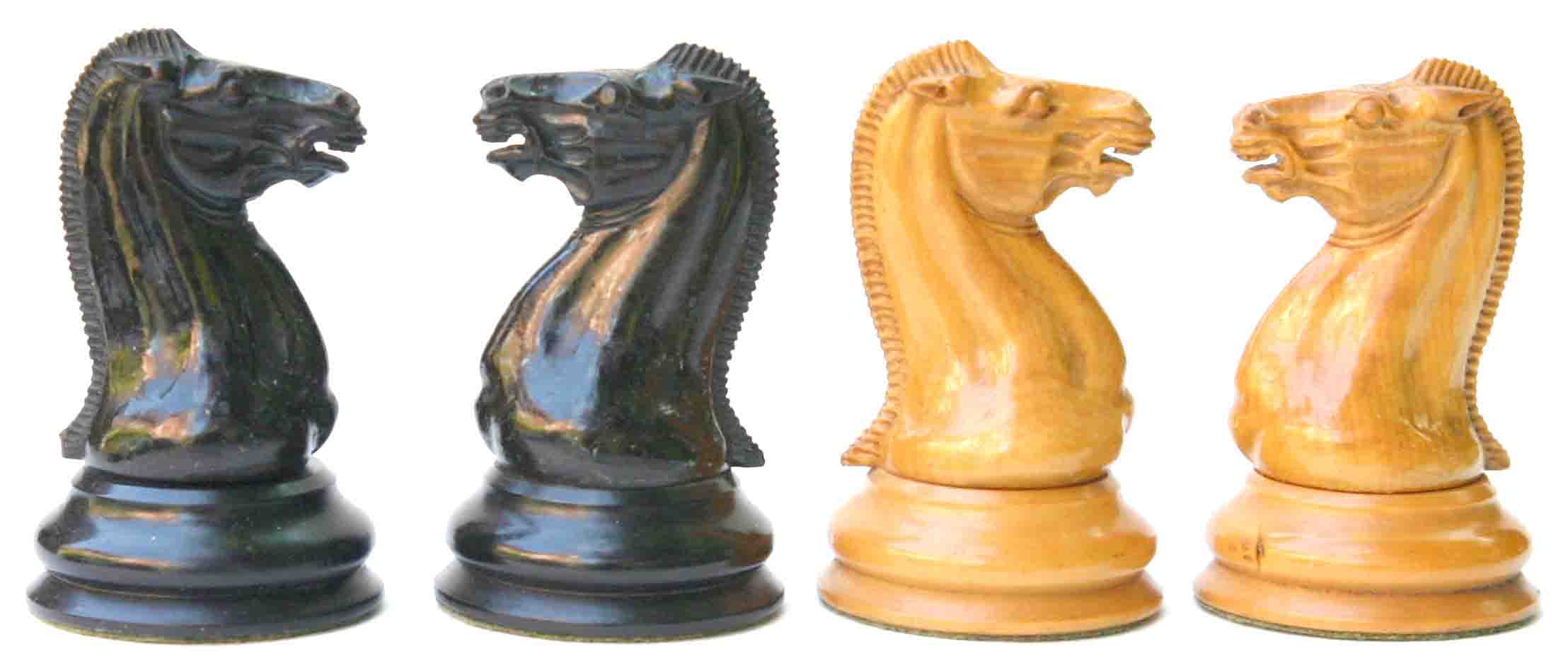
Bishops
The bishops are characteristic of the earliest sets. The mitres are are
deep and wide, slicing the knops close to the outer edge. It is
remarkable that they have not broken off as they usually have done in
these very early sets.
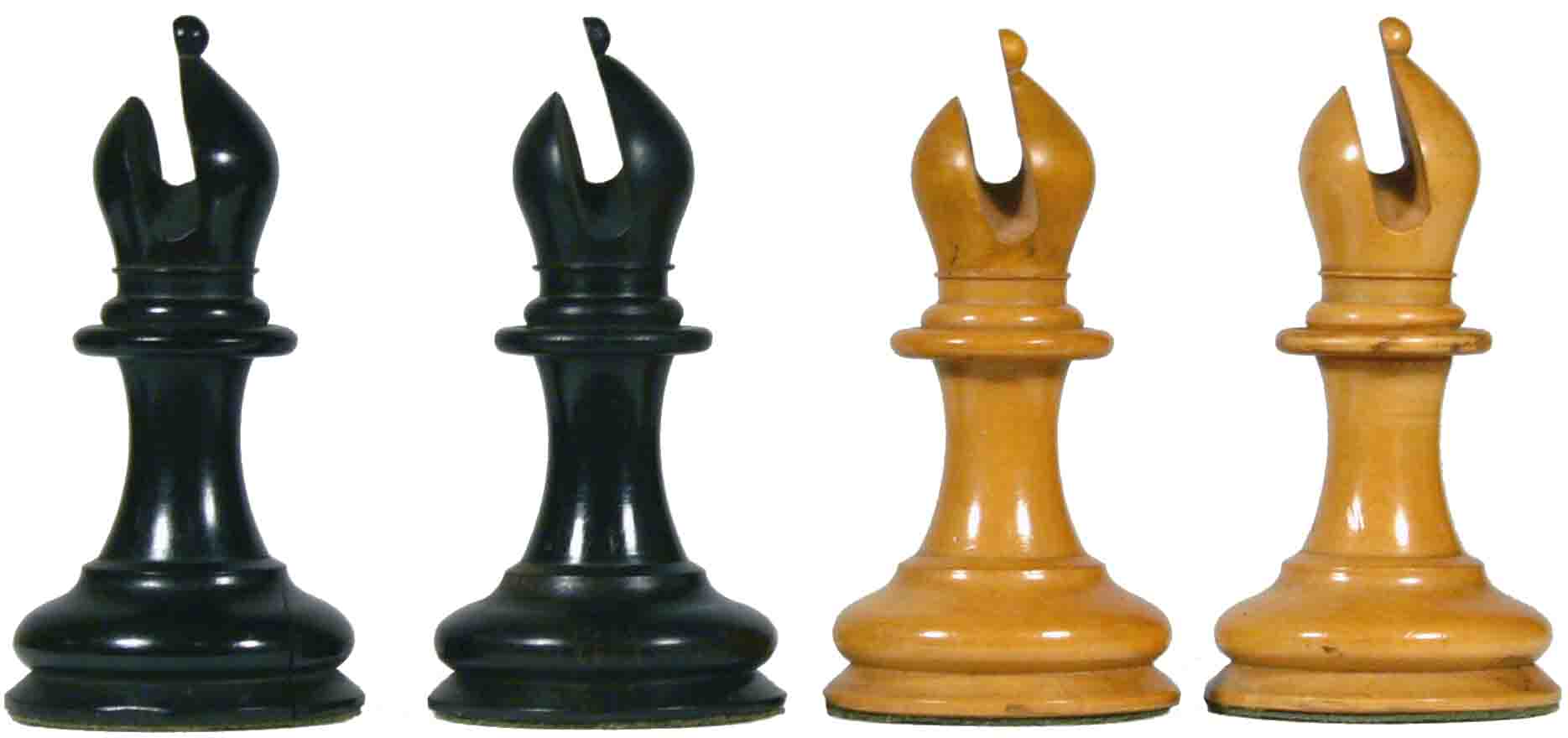
King's cross
Frequently, the crosses on the kings are damaged or replaced. There are
two clues here that the crosses are original. The crosses were made by
turning a cylinder, the width of the cross, varnishing the outside with
shellac, then cutting the cross on the lathe with a V-shaped tool,
followed by slicing off the front and back. So, the outsides of the
horizontal arms of the cross should be convex and varnished, whereas
the flats are unvarnished. These features can be seen in the photos -
the outer edges are polished and the flats are slightly discoloured as
is found with old unvarnished boxwood.
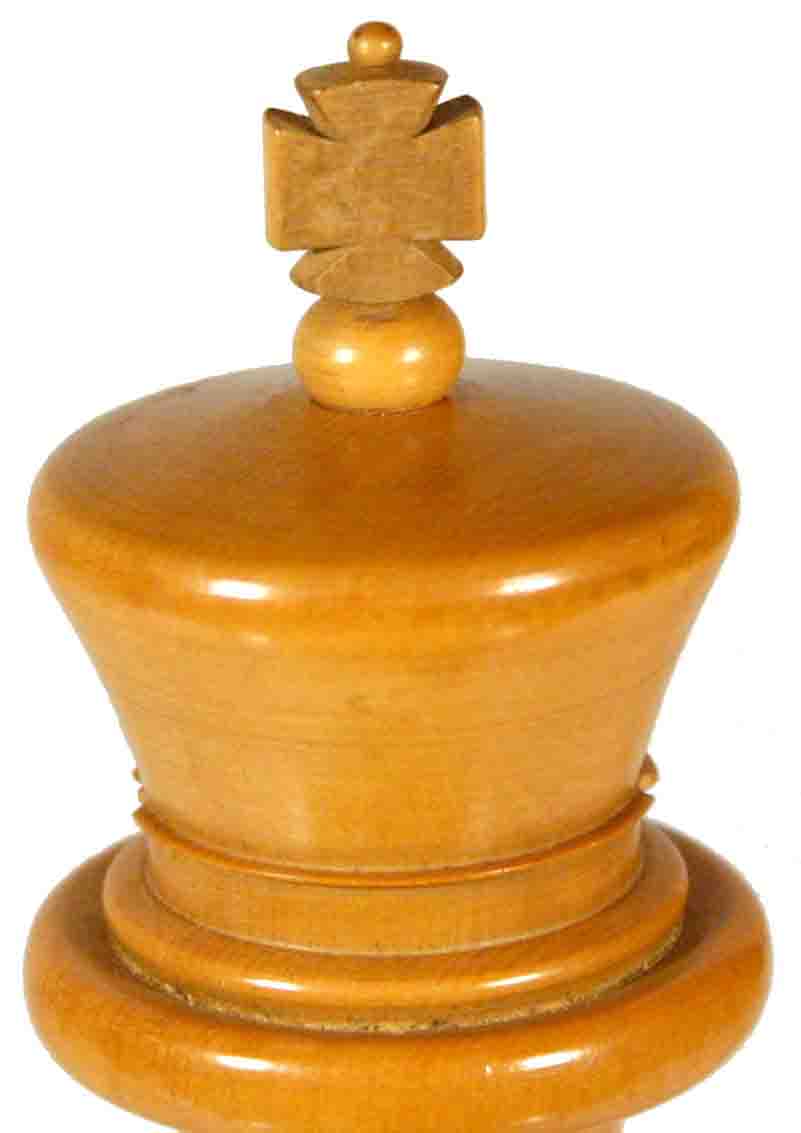
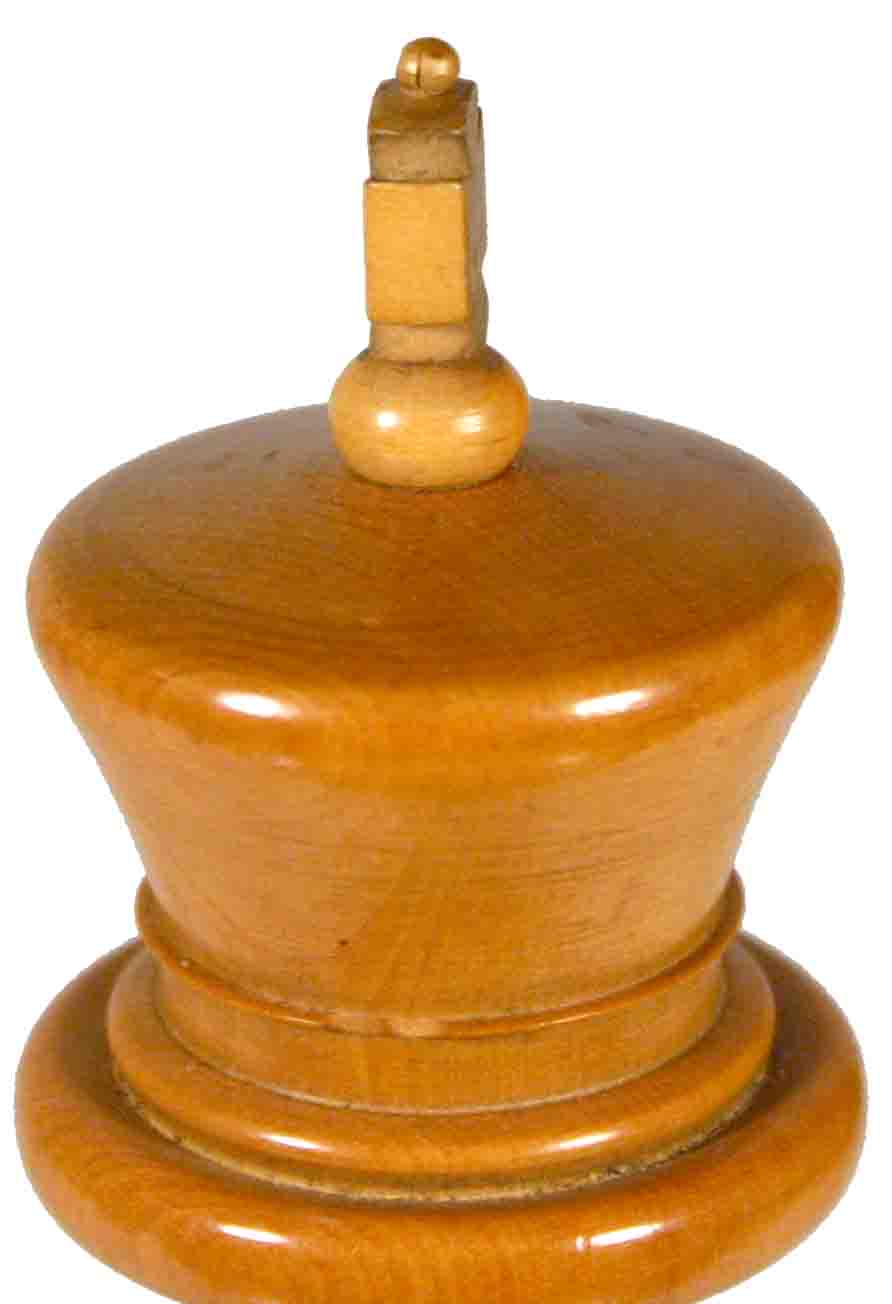
Signature
The white king is signed J.Jaques, indicative of 1849-1850.

The pieces
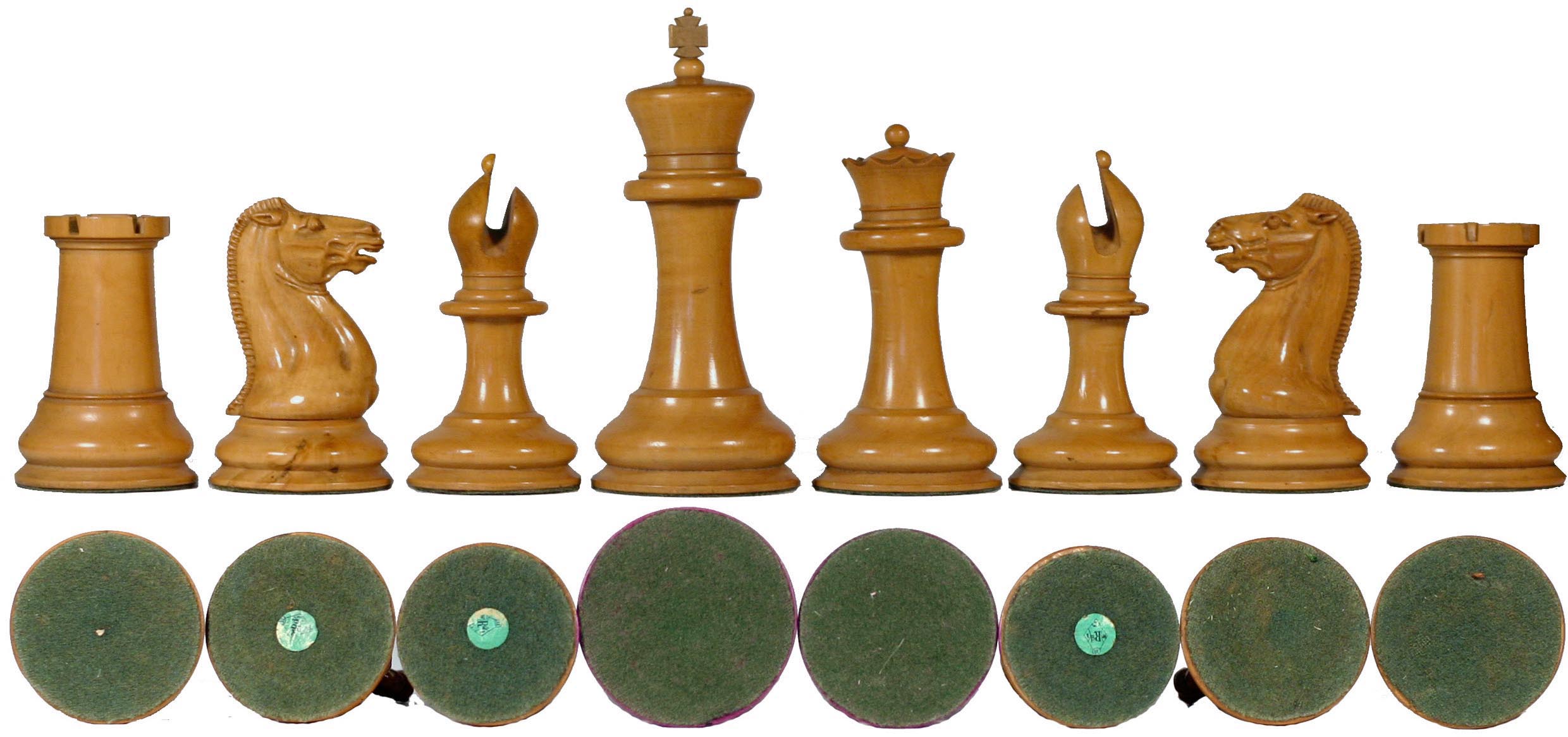
Three pieces have registration stickers for 1 March 1849. These ones
have a mistake of the "S" being missing, which is found on the earliest
pieces.
Pawns
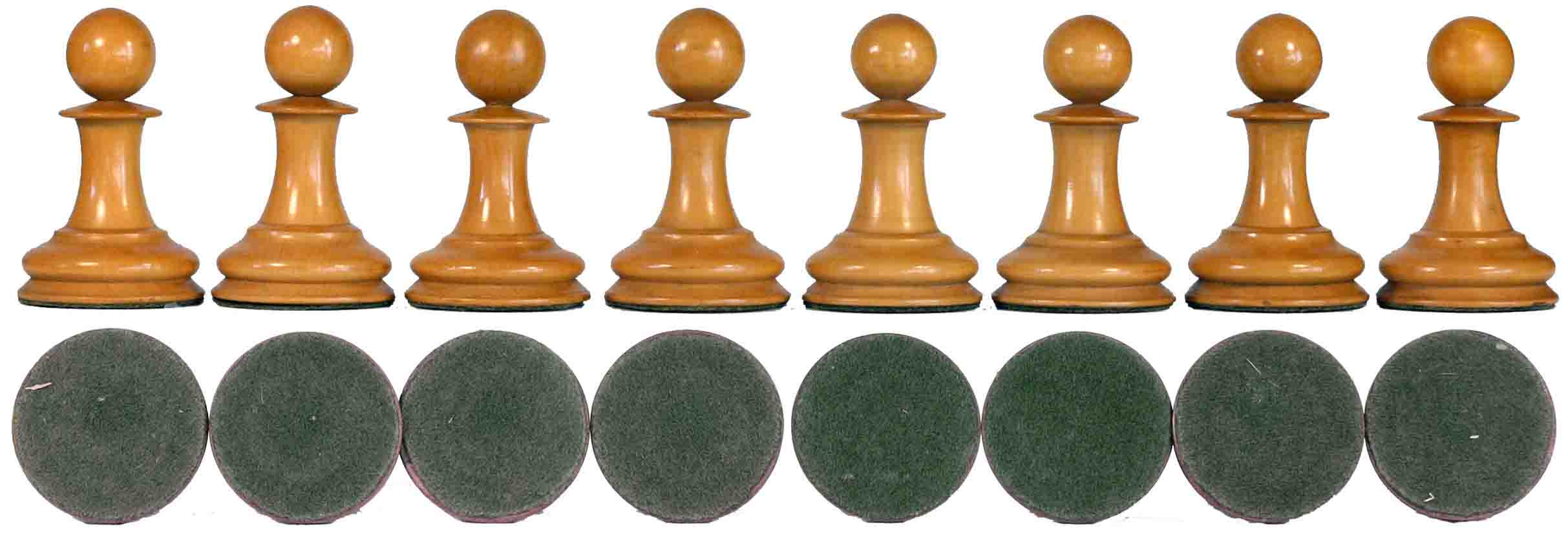
The white pawns are all original with all the original felts.
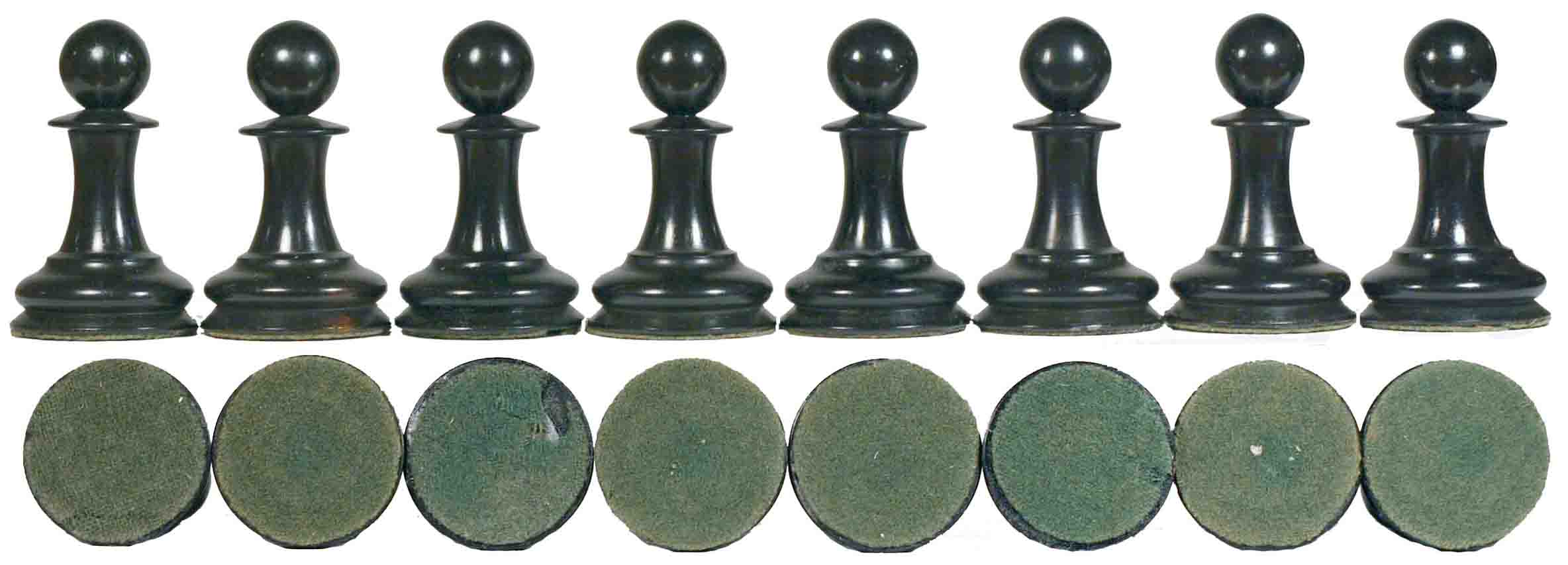
The black pawns are also all original. The small differences are within
tolerance of the early standards and indicate the degree of variation
to be expected.

The felts of all the pawns are seen to be the same.













